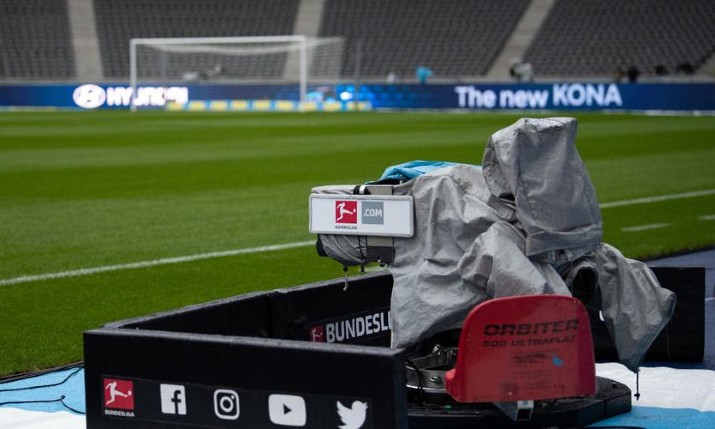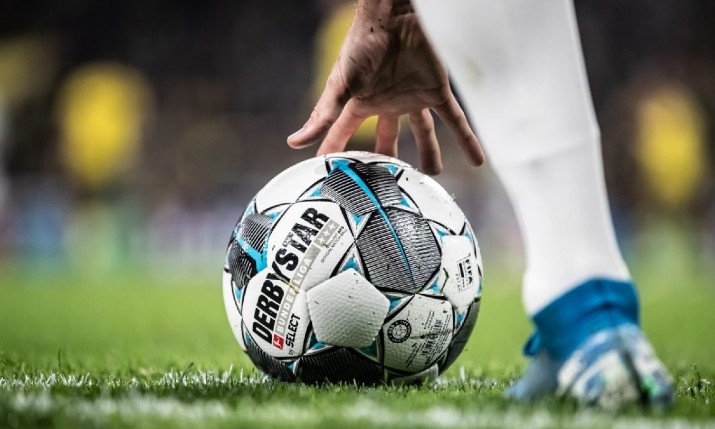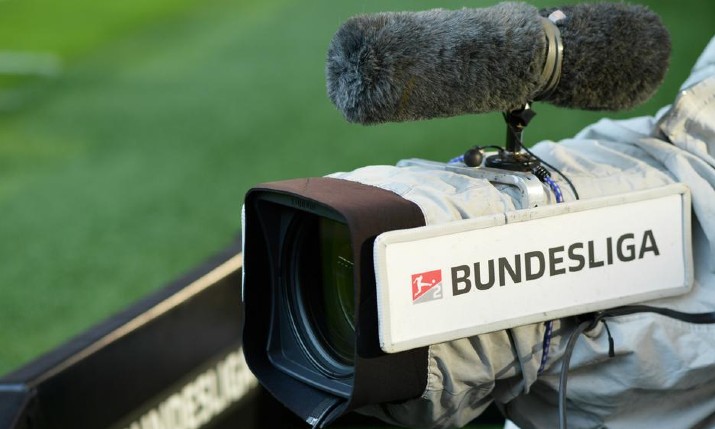Bundesliga re-start: How host broadcaster Sportcast captured the live action on Matchday 26
Behind-closed-doors coverage tweaked to compensate for lack of atmosphere

When the Bundesliga returned last weekend, becoming the first top tier European football league to do so following the coronavirus lockdown, the sports broadcasting community watched on – not just to witness live sport for the first time in several weeks but also to see how the TV coverage might have been impacted.
The games themselves were always going to be fundamentally different without fans inside the stadiums. But would the broadcast output, or the way it was produced, be materially changed by social distancing and the strict health and safety rules that have been put in place?
As it turns out, the match coverage itself, produced by Sportcast, looked very similar to how Bundesliga matches looked pre-lockdown. But there were a few tweaks both on and off camera, as SVG Europe can now reveal.
A subsidiary of the Deutsche Fußball Liga (DFL), Sportcast is based in Cologne. It is the host broadcaster, producing the world feed for all games in the Bundesliga and Bundesliga 2.
SVG Europe was given a briefing on the ‘new normal’ production set-up earlier this week.
Crucially, in order to guarantee the quality of the world feed for all the licensee partners, the camera and audio “concepts”, as they are called, of Bundesliga and Bundesliga 2 have fundamentally remained the same.
“Because we were missing the crowd emotions, I tried to add that with close-ups of players, coaches and the substitute benches. We also tried to show more emotional action replays than we would normally do.”
However, taking into account the “hygiene concept and certain regulations,” slight changes and adjustments were made to ensure a clear separation between sports and media production.
This meant that cameras that are usually close to the pitch were repositioned. As an example, the super slo-mo camera between the technical zones was moved to a lower area of the stand.
Similarly, a steadicam shot was available to the match director but the operator wasn’t allowed to work the line, as he or she normally would. Instead, the steadicam had to stay behind the advertising hoardings.
One of the biggest changes involved the pre- and post-match interview process.
This was modified based on hygiene specifications, as well as the individual stadium infrastructure, and saw reporters ask questions to players and club officials but without being granted access to the pitch.
“As a solution,” explained a Sportcast spokesperson “partially equipped setups at the press or lower stand were arranged and remote interviews from broadcasting centres were realised at shared positions. In order to fulfil the distance rule and separate the players, microphones attached to a pole were used to capture statements.”
It’s all gone quiet over there

Of course, the major difference between live football pre-COVID-19 and post (or during) the pandemic is the absence of supporters inside the ground, and therefore the lack of any atmosphere and off-field passion. Pitchside mics pick up every kick, every tackle, every coaching instruction and even the sound of the ball hitting the back of the net when a goal is scored.
All are of great importance but broadcasters around the world have been wrestling with the ethical conundrum about ‘faking’ the atmosphere at behind-closed-doors matches.
There is no right or wrong answer it seems, although Sky Germany is offering its viewers a second sound option during matches that provides a recorded stadium atmosphere via a “freely selectable alternative audio track”.

A masked Sebastian von Freyberg preps for Eintracht Frankfurt versus Borussia Mönchengladbach
The world feed audio from Sportcast was free of such embellishment, however. Where possible, the lack of atmosphere in the ground was compensated for by a change in the match directing, as director Sebastian von Freyberg (pictured, right), who worked on the Eintracht Frankfurt versus Borussia Mönchengladbach match on Saturday 16 May, explained.
“We framed camera 1 a bit tighter in order to not show too much of the empty stands,” he said.
“And because we were missing the crowd emotions, I tried to add that with close-ups of players, coaches and the substitute benches. We also tried to show more emotional action replays than we would normally do. And more close-ups of faces during set pieces in order to compensate.”
Speaking to SVG co-executive director of editorial services Ken Kerschbaumer during an HBS Broadcast Academy webinar this week (use password BASessions_2020 to view), Von Freyberg said that he believes “the lack of audio and ambient sound in the ground is the main issue” facing televised football coverage right now.
“Every idea is welcome because we have to deal with it in the end,” he said.
“But it is up to personal taste. We want to transmit emotions and the lack of ambient sound is a lack of emotions. It is also a cultural thing. In Germany, more people prefer a documentary style, one that shows reality. Sky offered viewers a second option, on the audio. This is quite a good idea because it is up to personal taste.”
The Sportcast spokesperson added that “the primary focus of the world feed production is still the action on the pitch. At the same time, we are closely observing various technical solutions for creating an atmosphere without spectators inside the stadium. While currently no fans can be shown, reactions from players, coaches and substitutes are increasingly captured.”
You’ll always walk alone?

Personal hygiene is a top priority for the DFL at matches, as its broadcast guidelines showed ahead of the Bundesliga’s return.
These guidelines are in place to protect all those involved in the media production as well as to separate TV production as much as possible from the other zones inside the stadium.
There is a significant reduction in the number of production staff that are allowed to be on-site during matches too and the set-up inside the OB vans is different with fewer workstations in order to comply with the rules on distancing. Plexiglas partitions are used where social distancing is not possible.
Von Freyberg was temperature-tested before entering the ground – failure would have resulted in him not being admitted. He also wore a mask while directing and vision mixing.
Communication between the team was certainly different from normal too. “The [pre-match] meeting was strange,” he said.
“We couldn’t gather as we would normally. Instead, we had the briefing via the [talkback]. We had to maintain social distance, we had lots of hand-washing facilities and it was all quite strange. The communication went well though. The hygiene concept worked well and everybody followed the rules that were given by the government and the health authorities.”
Thankfully for everyone concerned – on personal, sporting and televisual levels – the matches and match coverage went off smoothly on the Bundesliga’s re-start following lockdown.
But there may well be further tweaks as the season progresses towards its scheduled new climax at the end of June.
“After one matchday we are [now] intensely analysing and evaluating of all production processes that have been implemented for the first time. Our quality management greatly helps us within this process, while all live productions are centrally captured and analysed.”
“Matchday 26 production of Bundesliga and Bundesliga 2 ran smoothly without any problems,” summarised the Sportcast spokesperson.
“The new circumstances result in many positive learnings for the on-site production and specific technical setups. This applies to the preparation and production phases including all service providers, broadcasters and licensee partners.
“After one matchday we are [now] intensely analysing and evaluating of all production processes that have been implemented for the first time. Our quality management greatly helps us within this process, while all live productions are centrally captured and analysed.
“Our first initial findings result in further enhancing the position of various cameras close to the pitch, the camera guidance and the technical infrastructure.
“On a daily basis, we are in close contact with all service providers and licensee partners to improve the production for all involved parties. Within the scope of this special production concept, we think from matchday to matchday and – if necessary – adjust as finely as possible.”
The Bundesliga season continues this weekend. Matchday 27 kicks off on Friday 22 May with the Berlin derby between Hertha Berlin and FC Union Berlin.

